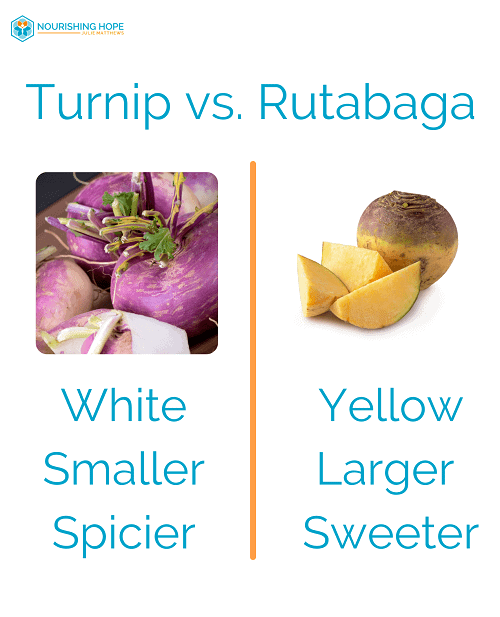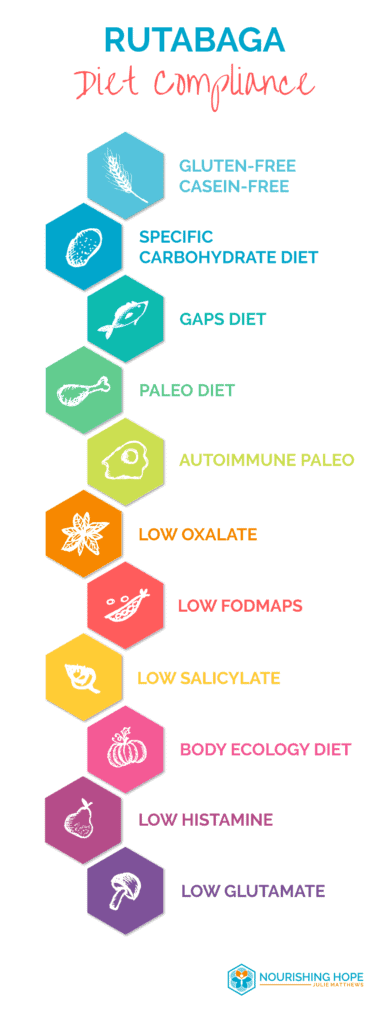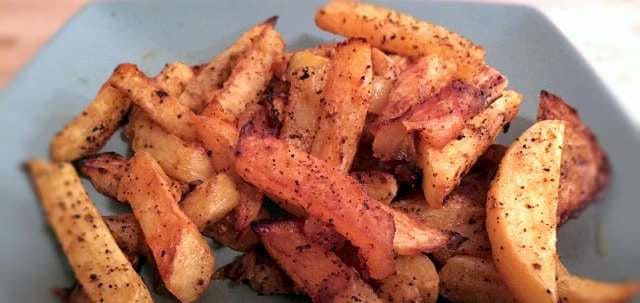
The Rutabaga, also known as a swede, Swedish turnip (though distinctly different than a turnip), and neep (in Scotland).
Rutabagas are root vegetables and a member of the cruciferous or brassica family, which includes broccoli, cauliflower, cabbage, Brussels sprouts, and kale.
Rutabagas have similar wonderful nutritional properties to the rest of the cruciferous family including being rich in sulfur compounds good for detoxification and many other functions including cancer fighting benefits. They are high in vitamin C, and also contain potassium, magnesium, calcium, and niacin. Rutabagas are also high in fiber to aid healthy bowel movements and provide fuel for beneficial bacteria to support a healthy microbiome.

Rutabagas vs. Turnips
It’s easy to confuse rutabagas and turnips at first glance. Both are root vegetables and both can have a purplish colored top half (although, not all rutabagas have purple tops).
However, there are some differences that make them fairly easy to distinguish when you know what to look for.
Turnips have white flesh inside and are white and purple on the outside. They are smaller than rutabagas.
Rutabagas have a creamy, yellow flesh inside and a more yellow/brown outside with possibly some purple on top. Rutabagas are typically larger than turnips.
They have a similar nutty and slightly sweet taste; however, turnips are more spicy (similar to a radish), and rutabagas are sweeter with less moisture content making them easier and better to make fries and “starchier” style dishes, which are not high in starch like potatoes.
Never Eaten Rutabaga?
 Rutabagas (swedes) are a cool weather crop, and are popular in colder climates, such as: Sweden, Norway, Finland, Europe and Canada. In fact, many cultures in these regions have traditional dishes made from this common crop.
Rutabagas (swedes) are a cool weather crop, and are popular in colder climates, such as: Sweden, Norway, Finland, Europe and Canada. In fact, many cultures in these regions have traditional dishes made from this common crop.
Rutabagas are not very popular in the United States. You have probably seen them in your grocery store. However, my experience with clients is that few families have ever eaten them.
This is a wonderful opportunity for a new addition to your meal plan!
On a special diet? Chances are rutabagas have a place!
Compliant With Most Special Diets
One of my secret weapons for my nutrition clients, Rutabagas are compliant with most special diets.
Rutabagas are allowed on the following special diets:
- Low salicylate
- Low oxalate
- Low FODMAPs
- Low amine
- Low glutamate
- Specific Carbohydrate Diet
- GAPS Diet
- Paleo
- AIP Paleo
Keto is the only diet where they are not the best. Technically they are “allowed” on keto, but because they are a bit high in carbs, only a very small portion size would be permitted.
Of course, like every new food, add it slowly to confirm it’s tolerated by you or your child. Everyone is unique and has personalized, BioIndividual Nutrition needs. And eat it in moderation.
Rutabaga Recipe Ideas
I like to use rutabagas anywhere I would normally use potatoes.
- Rutabaga fries
- Mashed rutabagas
- Rutabaga chips
- Roasted rutabagas
- Rutabaga topped casseroles
My family’s favorite is Rutabaga Fries.
Check out our Rutabaga Fries recipe here.





0 Comments